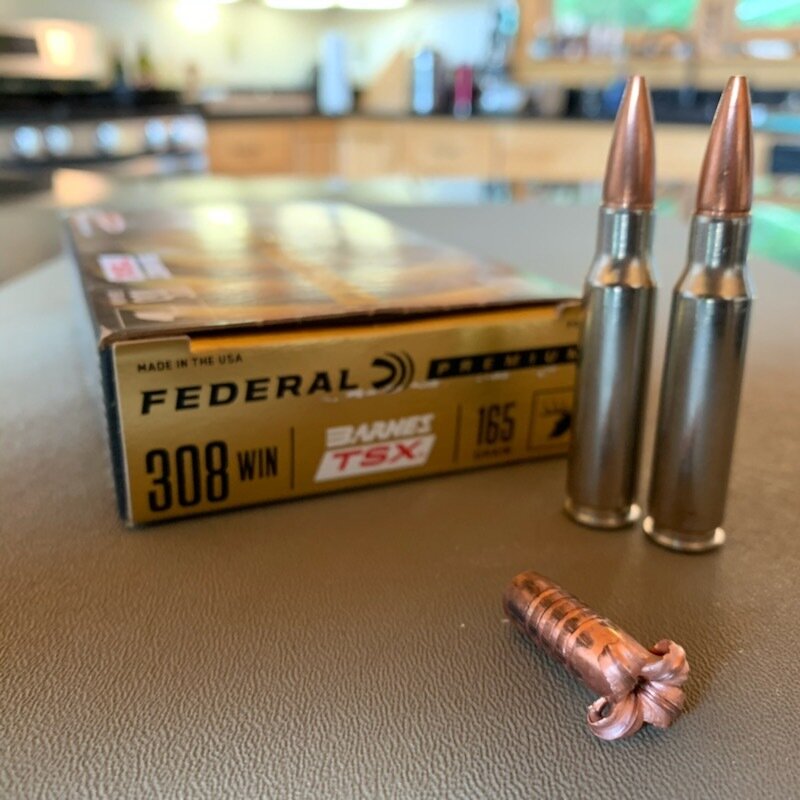Get The Lead Out
It was late 2018 when my hunting buddy and foraging mentor, Arthur Haines, began showing me studies about lead from hunting ammunition contaminating meat harvested by hunters. He kept gently nudging me to make the switch.
Initially, I was a bit defensive. It wasn’t that I disagreed, I know lead is a toxic metal — and I was well aware of the health implications, like reduced IQ, increased aggression, reduced motor skills, and cancer, but I was — like a lot of hunters — slow to make the change. I knew I was feeding this meat to my wife and friends, and of course, consuming it myself too — and as Arthur points out in a blog he wrote on the topic, lead level increases are often detectable in people shortly after consumption. What was stopping me?
If I was honest, it was that I would have to purchase new ammunition and zero all of my weapons with it. This will immediately make sense to seasoned shooters, but for the uninitiated, it's important to understand that when switching ammunition you’ll have shifts in your rifle's point of impact. This is because different loadings will have differing amounts of powder and different projectile weights. Switching ammunition means taking the time to zero your weapons to the new ammo. While not a huge barrier to entry, I hesitated through the 2019 big game season, continuing to shoot lead-based ammunition, despite the nagging voice in my head suggesting I switch over. Well, the 2020 big game season has arrived, and I’m happy to say I’ve got my weapons zeroed with new, lead-free ammo.
I primarily shoot .308 Winchester (7.62x51) when hunting medium and big game, and after some significant research, I landed on Federal Premium’s loading of the 165 grain Barnes TSX. It’s a copper monolithic projectile known for its very reliable expansion.
I recently got to put it into action while hunting whitetail deer on nuisance tags issued to a farmer friend. I harvested two young bucks at 265 yards and was impressed with the clean, ethical kills that resulted. Upon impact, the first buck immediately dropped to his knees where he stood. The second buck ran just a few yards before also succumbing. After examining them, I assumed both projectiles had exited into the ground, so I was surprised when butchering the hindquarters to find one of the bullets lodged in the knee of one of the bucks. I’m still not sure how it got there, but bullets sometimes do weird things upon impact. Regardless of how it happened, I was pleased to see the bullet so I could see how it had expanded.
What impressed me most — and stands in contrast to my experiences with fragmenting lead ammunition — was how clean the wound channel was, and how little damage was done to surrounding tissues. One of the issues with the lead bullets I’ve used in the past is that as they break apart in the animal, fragments can travel as far as 18” from the wound channel. This means small lead fragments may end up in meat you eat without you knowing it. Also, oftentimes, you do find the fragments, but all around them is blood-shot damaged meat. That loss is pretty undesirable, and the idea of a monolithic projectile that retains its mass (doesn’t break upon impact) was exciting to me. No more lead contamination and potentially less meat and organ damage too.
So, I’m taking this same projectile out this evening on an early-season black bear hunt. It's performed well on two thin-skinned summer deer, but that doesn’t mean it’ll perform similarly on the thick pelage and hide of a black bear. If it does, I’ll be a believer!
Having anticipated the ammunition shortage we are now in the midst of, I stocked up early on enough of these rounds to get me through the next couple of seasons. I’m hoping that ammunition supplies return before I run out. If not, I can always fall back on my lead ammunition. But, now that I’ve gone non-toxic, I’m not very interested in going back. Copper monolithic bullets are better for me and my wife, my friends, the scavenging animals that feed on the discarded remains, and of course the environment that is the ultimate repository of all this ammunition.
It’s also the trend and the direction that the modern hunting movement is headed. I got on board a bit later than Arthur, but still, he and I both fall into the early adopter category. The revolution from lead to non-toxic is still in its infancy, but it's happening fast. If I was a new shooter, I’d just start with copper from the outset. And if you’ve been hunting or shooting for a while, maybe it’s time to consider making the switch. It means buying new ammo and re-zeroing your weapons, but if you take your health — and your family’s health — seriously, it’s probably time to consider it.
Have a look at this article, it might just be the motivation you were looking for!



